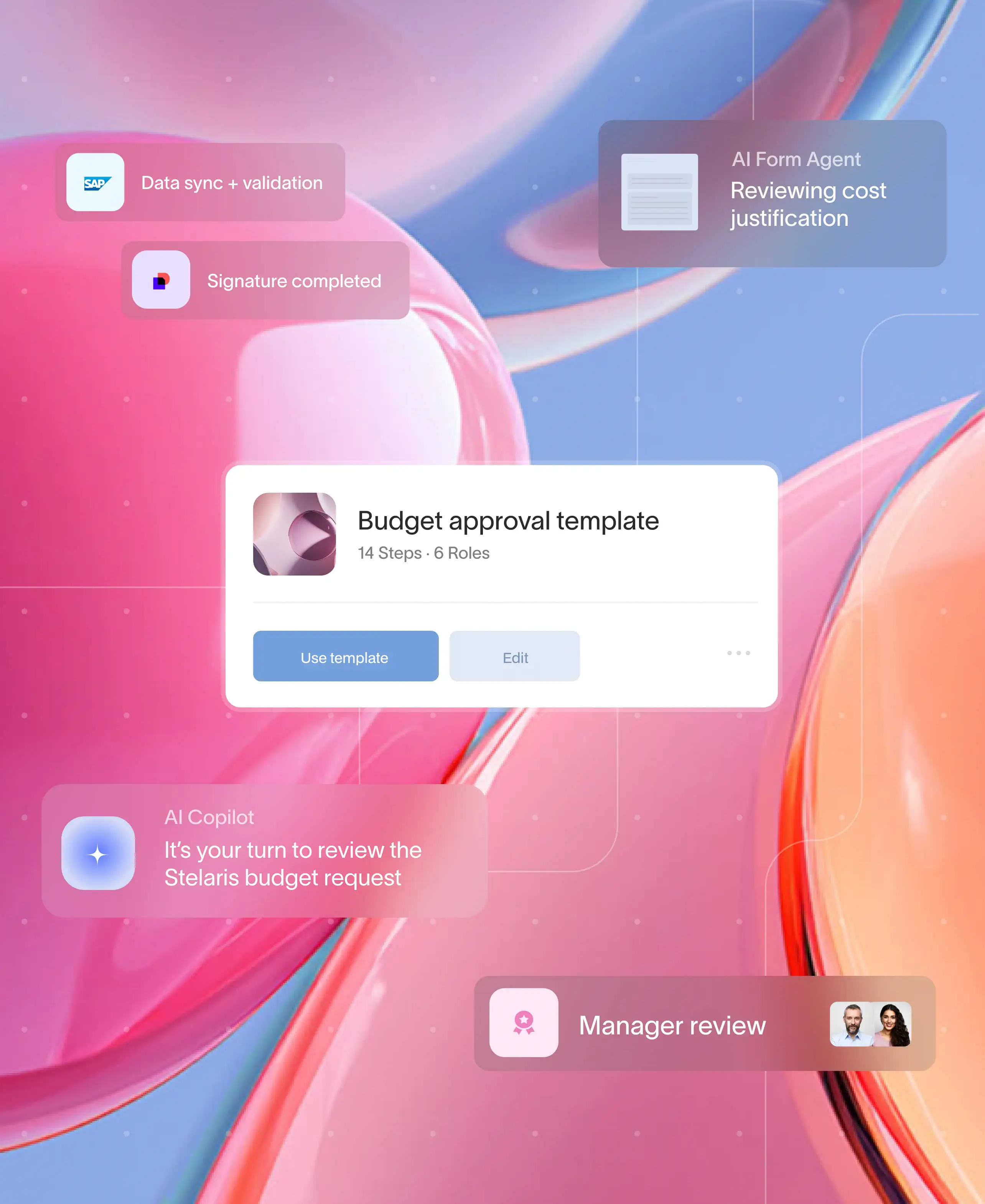
Strong vendor partnerships are the backbone of any thriving business. Without dependable suppliers, even the best strategies can falter. This is where vendor performance evaluation becomes essential. By regularly assessing your vendors, you ensure they meet your standards and contribute positively to your growth. Picking the right vendor is a crucial decision and will have a major impact on your business performance.
But what exactly is vendor performance evaluation, and why is it so crucial?
Understanding the purpose of vendor performance evaluation
At its core, vendor performance evaluation is the process of assessing how well your suppliers fulfill your requirements and expectations. This involves examining various aspects such as the quality of goods or services, delivery punctuality, pricing, and overall reliability. The purpose of vendor performance evaluation is to identify both strengths and areas needing improvement in your supplier relationships.
By conducting regular evaluations, you can:
- Ensure vendors deliver value for your investment
- Identify issues before they become major problems
- Strengthen communication and collaboration with suppliers
- Reduce risks associated with poor vendor performance
Regular evaluation of vendor performance not only safeguards your operations but also fosters a culture of continuous improvement.
So, how do you carry out an effective vendor performance evaluation?
How to do vendor performance evaluation effectively
Evaluating vendors doesn't have to be overwhelming. With a structured approach, you can streamline the vendor evaluation process and gain valuable insights. A successful vendor performance evaluation process involves several steps, all designed to ensure you're getting the best value from your suppliers while fostering stronger partnerships. You may use a methodology like the vendor comparison matrix to help you pick the right one. Let’s explore how you can evaluate your vendors effectively using an organized and thorough methodology.
- Defining your vendor performance evaluation criteria
- Gathering data and performance metrics
- Analyzing results and creating an action plan
1. Defining your vendor performance evaluation criteria
Before diving, it's crucial to set clear vendor performance evaluation criteria. These criteria will guide the entire process and provide a consistent basis for measuring your suppliers' performance. Here's a breakdown of the key areas to consider in your vendor evaluation criteria:
- Quality of products or services: The cornerstone of any evaluation is assessing whether the vendor is delivering what they promised. Are the products or services meeting your agreed-upon quality standards? This is a non-negotiable parameter in your evaluation of vendor performance, as subpar quality can disrupt your operations, damage customer satisfaction, and impact your bottom line.
- Delivery reliability: Even if the quality is top-notch, timely delivery is essential for maintaining smooth operations. Assess whether your vendor consistently meets deadlines. Late shipments or missed timelines can lead to production delays, missed opportunities, or even lost revenue. Incorporating this into your vendor performance evaluation checklist ensures you hold vendors accountable for keeping your business running efficiently.
- Compliance: Depending on your industry, your vendor may need to meet various legal, environmental, or contractual obligations. Evaluate whether the vendor is staying compliant with all regulations, including industry standards, safety protocols, and sustainability requirements. Compliance is not just about following the law—it's about maintaining your business's reputation and minimizing risks.
- Communication and responsiveness: How easy is it to communicate with your vendor? Are they quick to respond and proactive in addressing potential issues? Good communication can often prevent small issues from escalating into major problems. Include this as a key part of your vendor performance evaluation parameters to ensure you have a supplier who is reliable and attentive to your needs.
- Cost management: Is your vendor providing value for money? This doesn’t just mean offering the lowest price—it means controlling costs effectively while still delivering high-quality products or services. You want to ensure that your vendor isn’t inflating prices or adding unnecessary fees, making this a critical component of your vendor performance evaluation.
By clearly defining these criteria, you're setting the foundation for a fair and comprehensive assessment. A well-structured vendor performance evaluation questionnaire can help collect valuable feedback from internal stakeholders who interact with the vendor, ensuring a well-rounded view of the vendor's performance.
2. Gathering data and performance metrics
Once your vendor performance evaluation criteria are set, it’s time to gather the data that will inform your evaluation. The metrics should align with the criteria you’ve defined and offer a quantifiable way to assess each vendor. Here’s how to proceed:
- Collect internal feedback: Start by soliciting feedback from your team, particularly those who work closely with the vendor. Their insights can provide a clear picture of how the vendor performs day-to-day. A vendor performance evaluation questionnaire can be a helpful tool here, asking targeted questions about specific areas like product quality, communication, and delivery consistency.
- Analyze external reports: Many vendors provide regular performance reports detailing metrics such as on-time delivery rates, defect rates, or service-level agreement (SLA) adherence. Cross-reference these reports with your internal data to ensure accuracy.
- Use historical data: Compare current vendor performance against historical data to identify trends. Has the vendor improved or declined in critical areas? This analysis can help you pinpoint areas that require attention or further negotiation.
3. Analyzing results and creating an action plan
With data in hand, you can now analyze the results of your vendor performance evaluation. Here are some things to consider:
- Analyze the results of your vendor performance evaluation, identifying gaps or recurring issues.
- Watch for red flags, such as vendors repeatedly missing deadlines or failing to meet quality standards.
- Recognize vendors that consistently meet or exceed expectations as potential opportunities for deeper partnerships.
- Create a detailed performance scorecard outlining each vendor's strengths and areas for improvement.
- Use the scorecard as the basis for a data-driven, constructive discussion with the vendor.
By following a structured vendor performance evaluation process, you ensure that every vendor relationship is optimized for mutual success. The purpose of this evaluation is not just to find faults but to foster continuous improvement and innovation. Incorporating these detailed steps into your regular procurement strategy will help you build stronger partnerships and get the most out of your vendor relationships.
Creating a vendor performance evaluation checklist
A checklist ensures consistency in your evaluations. It helps you track each vendor's performance against the criteria you've set. Consider developing a vendor performance evaluation questionnaire that covers all key areas. This tool can be used by various stakeholders to provide input, ensuring a well-rounded evaluation.
1. Collecting data and feedback
Gather information from multiple sources:
- Internal stakeholders: Get input from team members who interact with the vendor.
- Performance metrics: Review data on delivery times, defect rates, and other quantifiable measures.
- Customer feedback: If applicable, consider end-user experiences with the vendor's products or services.
This comprehensive approach ensures the evaluation of vendor performance is based on both quantitative and qualitative data.
2. Analyzing the results
Review the collected data to identify patterns and trends. Are there consistent issues with a particular vendor? Are some suppliers consistently exceeding expectations? This analysis helps in making informed decisions about your supplier base.
3. Documenting your findings
Create detailed reports that outline the results of your vendor performance evaluation process. These reports serve as a reference for future assessments and strategic planning.
Once the evaluation is complete, the next step is communicating your findings to your vendors.
Communicating performance reports and planning next steps
Open and transparent communication is key to building strong supplier relationships after the evaluation of vendor performance.
Sharing evaluation results with vendors
When presenting performance reports:
- Be clear and specific: Provide concrete examples and data to support your feedback.
- Highlight positives and areas for improvement: A balanced approach fosters goodwill and encourages cooperation.
- Collaborate on solutions: Work together to develop action plans addressing any issues.
Regular communication ensures that both parties are aligned and working towards common goals.
Effective communication doesn't just happen; it requires the right tools and platforms.
Streamlining vendor communication with Moxo
Managing vendor relationships involves juggling multiple communication channels, documents, and tasks. This is where Moxo can make a significant difference.
Enhancing collaboration through Moxo
Moxo’s platform is designed to centralize and simplify communication. Here's how it helps with vendor management:
- Vendor Portal: Use Moxo’s powerful vendor portal to manage all your supplier relationships in one place.
- Secure document exchange: Share performance reports and sensitive information securely.
- Task tracking: Assign action items resulting from evaluations and monitor progress within the platform.
By integrating Moxo into your vendor performance evaluation process, you can enhance efficiency and strengthen supplier relationships. Building strong vendor partnerships is an ongoing process that requires attention and effort.
Get started with Moxo to streamline your vendor communication.
Conclusion
Vendor performance evaluation is more than a compliance exercise; it's a strategic tool for business growth. Regular assessments help you maintain high standards, foster better communication, and create mutually beneficial relationships with your suppliers. By investing time in evaluating and communicating with your vendors, you're setting the stage for sustained success.
Experience better vendor partnerships with Moxo.
FAQs
What should be included in a vendor performance evaluation questionnaire?
A comprehensive questionnaire should cover key performance indicators such as quality, delivery timelines, cost management, communication, compliance, and overall satisfaction. Including open-ended questions can provide deeper insights into the vendor’s performance.
Can vendor performance evaluation lead to terminating a vendor relationship?
Yes, if evaluations consistently show that a vendor is underperforming and not meeting your organizational needs, it may be necessary to consider alternative suppliers. However, it’s important to attempt remediation through feedback and collaboration before making such decisions.
What role does technology play in vendor performance evaluation?
Technology streamlines the evaluation process by automating data collection, facilitating real-time communication, and providing advanced analytics. Platforms like Moxo enhance efficiency and accuracy, making it easier to manage and assess vendor performance.
How can you ensure objectivity in vendor performance evaluations?
Establish clear, measurable criteria and use quantitative data to assess performance. Involving multiple stakeholders in the vendor evaluation process and utilizing standardized evaluation tools can also help maintain objectivity.
What are some common challenges in vendor performance evaluation?
Challenges include collecting accurate and timely data, ensuring unbiased assessments, and effectively communicating feedback. Overcoming these requires a structured approach, clear criteria, and leveraging technology to facilitate the process.





